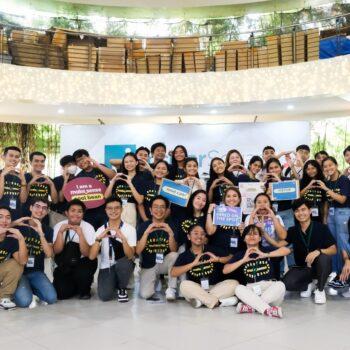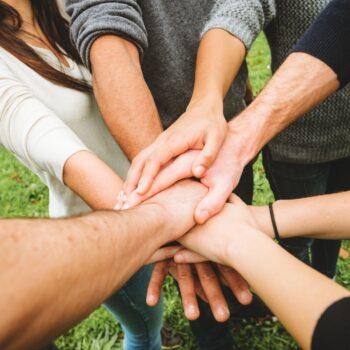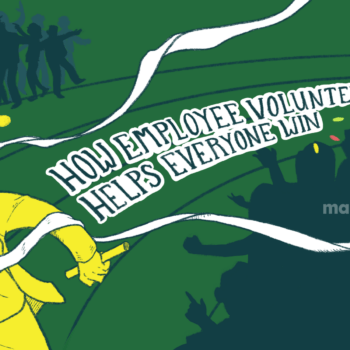“Over the course of the pandemic, we’ve been used to hearing the word “frontliners” to describe all kinds of healthcare workers. This gives us the image that COVID-19, much like other health crises we face in more “normal” times, is a battle fought primarily at hospitals.”
Despite the surface valor that comes with the title, my mother, a doctor currently at the frontline against COVID-19, has always challenged the notion of healthcare professionals being frontliners, saying that the hospital is the very last line of defense in any health crises.
This idea really threw me in for a loop. We don’t often think of health fires being put out anywhere else but in hospitals.
But the thought of hospitals supposedly being the last line of defense?
According to a study by the University of the Philippines School of Economics (UPSE), Filipinos rarely delay seeking in-patient care for grave conditions–as in childbirth, chronic illness.
However, outpatient care, or care in local health centers is less sought-out, or even avoided altogether.
Often, other opportunities or risks take precedence over seeking healthcare when the situation isn’t necessarily life-threatening. People would much rather work, or stay home to take care of the rest of the family, instead of seeking early consultation.
Unsurprisingly, we see the snowball effect of this when we think of our hospital system. The pandemic has held a magnifying glass to how hospitals are literally overflowing with people. Even during “normal” times we see beds shared by two or more patients in charity wards, patients and their bantays camping outside of ERs during outbreaks, the grim relief of casualties freeing up extra beds.
But to backpedal a little bit, there’s a lot to say about what exactly causes this. It’s rather simplistic if we think that our hospital pipelines are clogged solely because of Filipinos prioritizing finances over health.
How in loop are we exactly, when it comes to conversations about our own health?
How much do we know about policies in place and more importantly, how we can avail of important resources that could potentially make healthcare much less of a financial pain than it seems to be right now?
While it’s true that so many laws and privileges are in place to provide more means to exercise our right to receive proper healthcare, it will never make any real sense to just have it on paper.
“There’s no humanity in telling a patient in grave condition that they could’ve gotten earlier care if they only knew that some law or policy had the bill covered.”
The UPSE study also explains why Filipinos delay getting a consultation especially in their local community health centers. What comes to people’s mind: a small room, equipped with the barest essentials of pain killers, fever medication, maybe some old equipment like blood pressure apparatuses and thermometers–far from the people’s notion of quality healthcare.
Meanwhile, the healthcare workers in these units are often volunteers from the communities, receiving minimal to no incentive for the services they render, often struggling to augment supplies from their own pockets.
While we don’t have direct and immediate power over how these local health units are run, the supplies channeled into them, or the support that the manpower receives, it just goes to show that at this level, there’s still so much that could be done to rebuild people’s trust in their community’s capacity to help them get better.
This is where citizen power comes in. Over the course of the pandemic, we’ve seen many solutions spring up in the hopes of augmenting our crippled healthcare system–community pantries, reverse engineered PPE, donation drives of all sorts.
However, a year and a half in, citizen power is already reaching its own breaking point in donor fatigue, burnout and just a general dread from things seemingly not changing. Even in “normal” times, citizens, private actors, etc. have found it an inherited responsibility to fill in the gaps that the healthcare system suffers from. But this too, ebbs and flows.
Most of the time, it feels terribly disjointed–the government, health experts, and healthcare practitioners are off doing their own thing in policy and practice, meanwhile, citizens who want to help feel like they’re picking up the pieces that are left unattended and work in their own ways to fix them.
“To imagine better health outcomes is to start with having a seat open at the table for everyone. Open up conversations between health leaders and representatives of underserved communities.”
While these conversations can be difficult, awkward, and even can get painful, it’s due time that we have them–and make them the standard practice, rather than a token rarity.
Meet the young leaders imagining and building healthier futures
This year, the Health4All Coalition, powered by makesense with the support of Sanofi Philippines, gathered 137 volunteers from 10 regions all over the Philippines who wanted to take their ideas on health access to the next level.
Through collective calls, training in data gathering and program design, and understanding community needs, they were able to make their first steps to change the future of health.
We feature three of them here:

1. Imagining Healthier Choices
“A Siquijor where the youth can make healthier reproductive choices.”

“I want to create a supportive environment for people to create healthier choices. Awareness and education are at the core of making an informed decision. In IHF we get to do that – interact w the community, share the knowledge, and hopefully make an impact in their lives.” – Ereca, IHF volunteer from Agak
The pandemic has disrupted access to family planning. Researchers from the University of the Philippines Population Institute and the United Nations Population Fund project an estimate of 214,000 unplanned babies to be born within the year. This on top of the country’s existing difficulties with caring for the ballooning population!
This is where AGAK steps in. This young group of friends across the allied medical sciences are working to debunk social taboos that fuel poor sexual and reproductive health by educating the residents of Siquijor. Their goal is to create a supportive environment that allows the youth to make healthier choices for themselves.

Currently raising funds to purchase, prepare, and distribute sexual and reproductive health kits to the youth in the community. They hope for their project to reach as many people across the island, encouraging acceptance of responsible family planning and informed reproductive health choices – and for Siquijor to be a model community in the rest of the region.
“Poverty leads to teenage pregnancy. That cycle will continue to progress until an intervention is made. In order for us to break the cycle, we need to address first the social determinants, or where we can intervene. We can’t just tell them not to have sex, but we can tell them to protect themselves. If you are not prepared to have a child, [the child] can be an extension of your misery. We need to educate everyone.” – Charls, IHF volunteer from Agak
2. Imagining Accessible Vaccination
“A GenSan where vaccination information is free and accessible to all.”

“It’s very general when we say we want everything to go back to normal. We want everyone to be vaccinated and we want everyone to have access to healthcare that rightfully belongs to them. They should have access to information that would help them receive that healthcare. It’s a right, and we want everyone to practice that right.” – Rachelle, IHF volunteer
“Paayo ta,” is an expression of well wishes and good health, often heard said to groups whose families have fallen ill to COVID-19.
In GenSan, the Paayo Ta team found that vaccination hesitancy isn’t the problem – it’s access. From registration to scheduling, the locals often find themselves confused and in need of guidance. Imagine a centralized hub where all the information is available! Paayo Ta answers this need in collaboration with the City Public Information Office, TAPAT GenSan, and the City Public Health Office. An online database where the citizens of GenSan can find important information like vaccination sites, schedules, and how to apply to get vaccinated, all in one place: gensan-bakuna.com
3. Imagining Nutrition For All
“Imagining a Tacloban where malnutrition is a thing of the past. ”

Libsug Kabataan is a group of young leaders from Samar working on a community nutrition project. They plan on revamping the community garden in their barangay to provide a sustainable source of nutritious meals for malnourished children between the ages of 0-5. Building a healthier future through healthier meals and a healthier community experience!
In the meantime, the team is preparing to raise funds to improve the feeding program. Soon they’ll be strengthening relationships with the children’s parents to support them in providing their children with proper nutrition, and their families as a whole by getting the COVID vaccine themselves.




